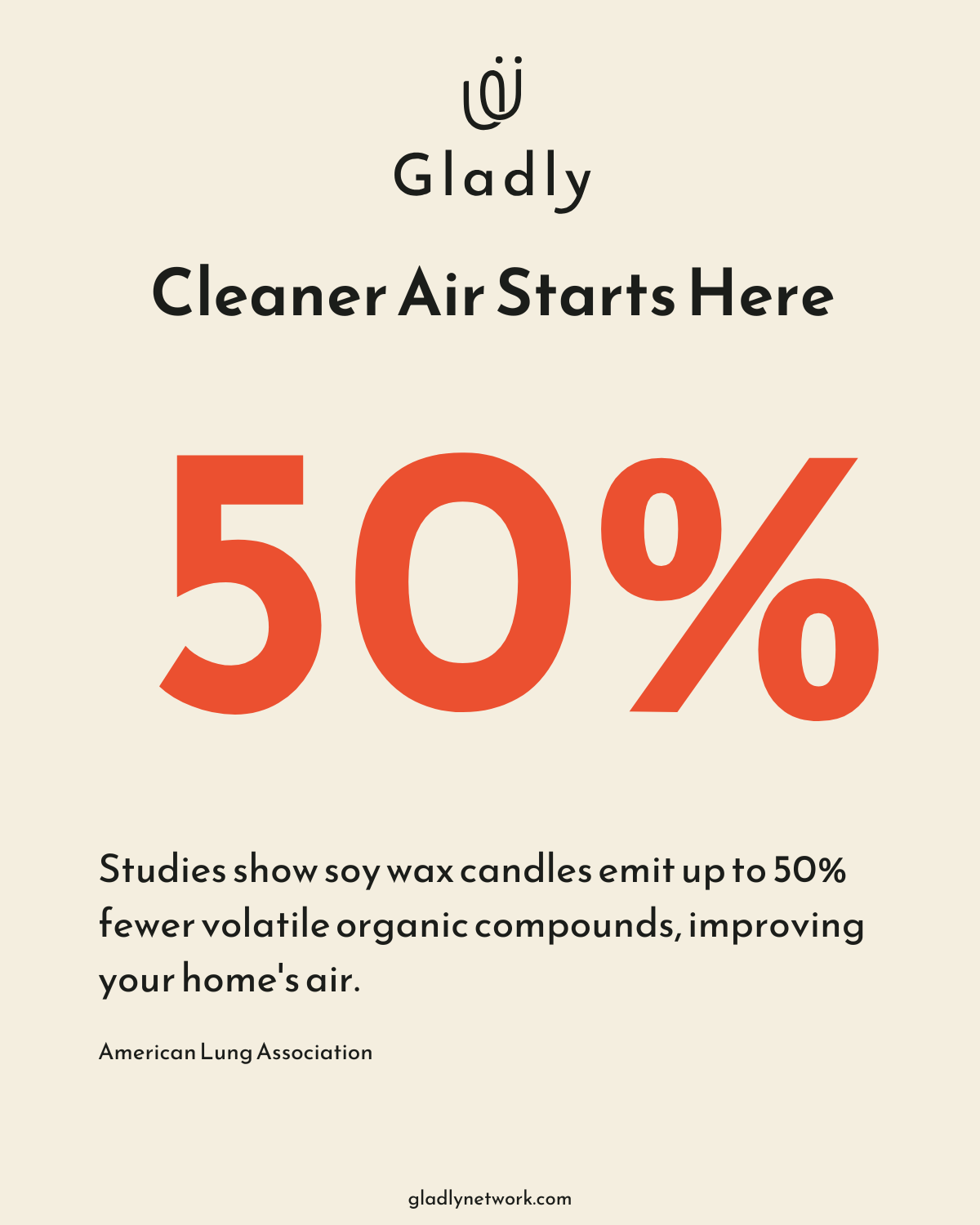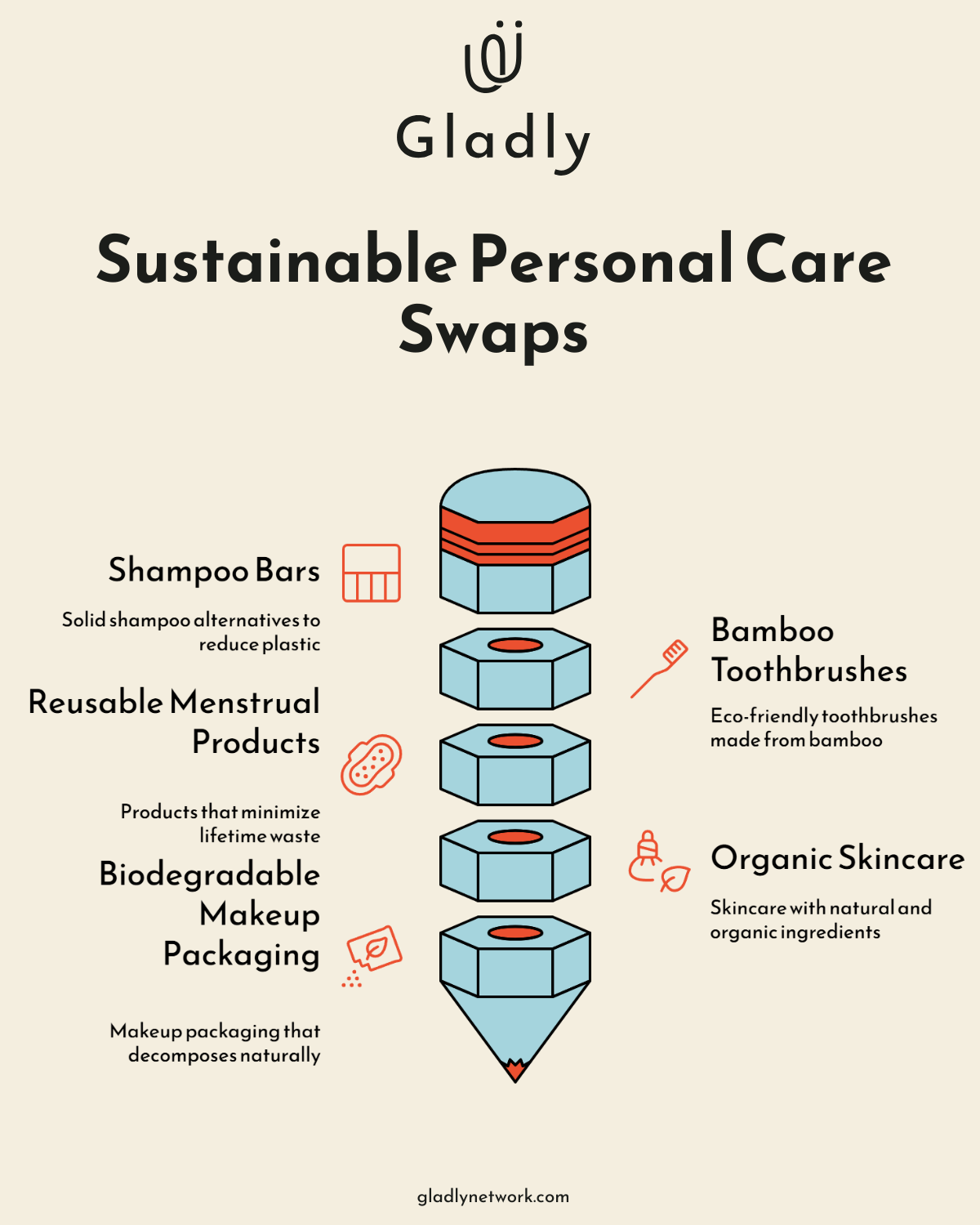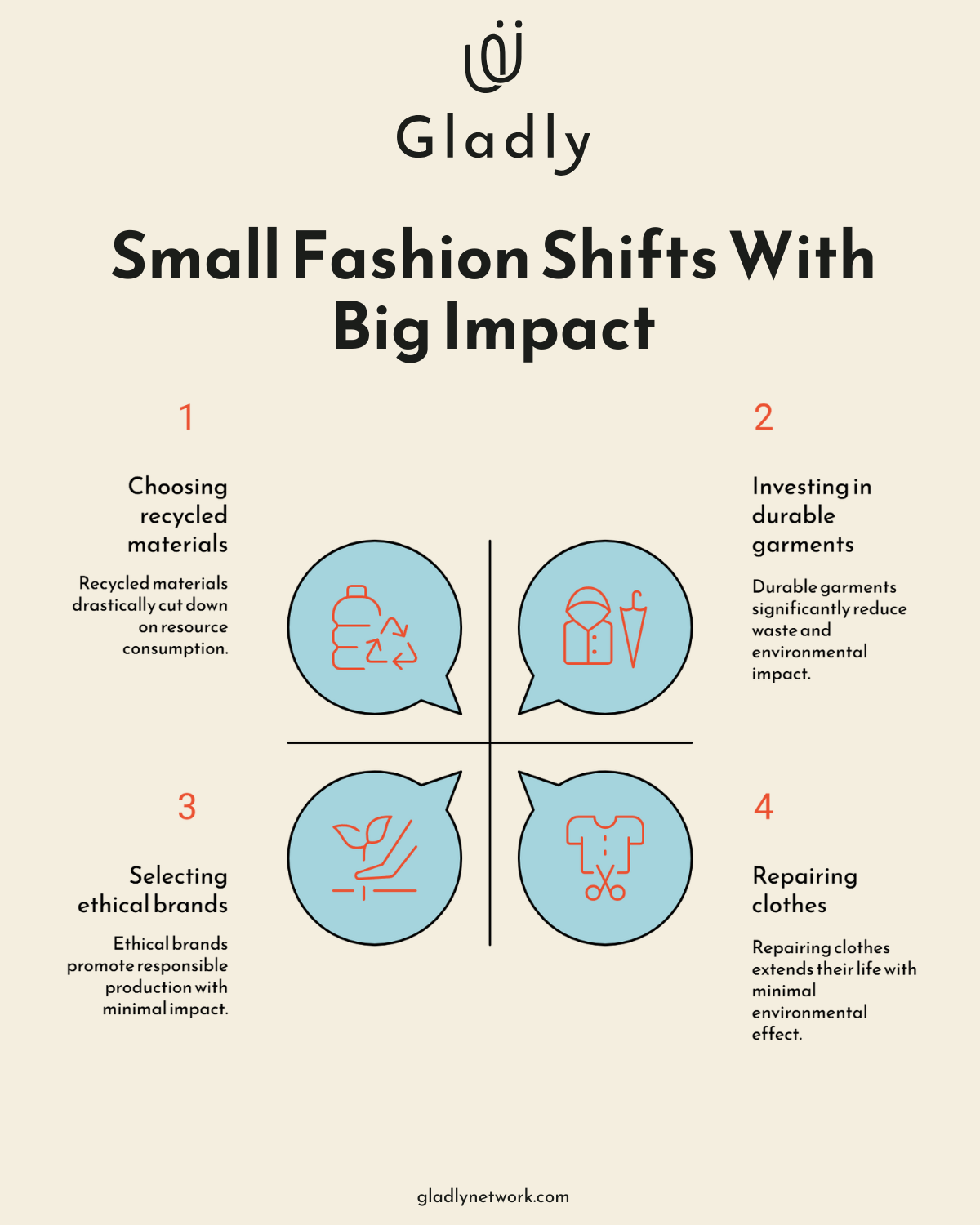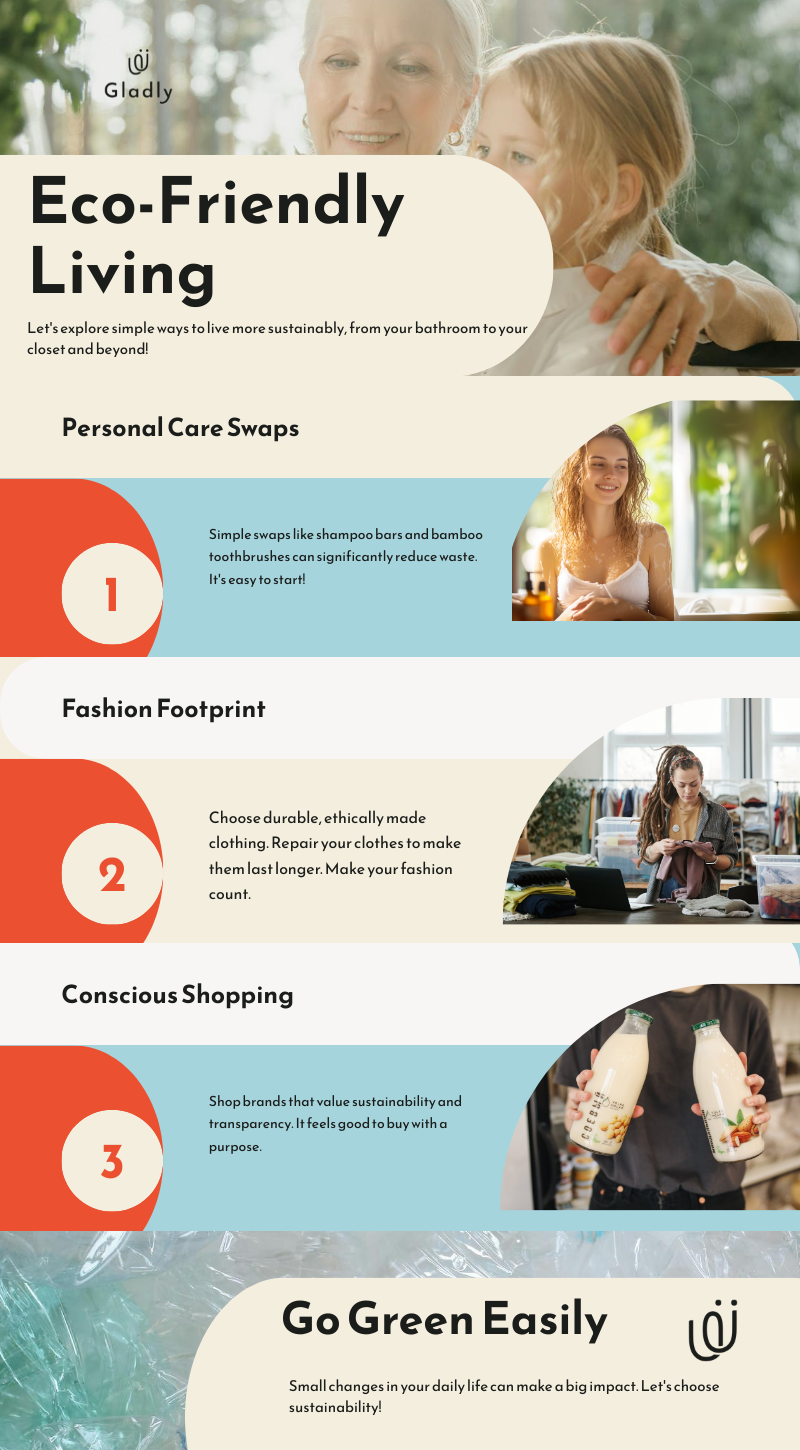Sustainable living starts with the choices we make every day. Swapping out single-use items for reusable ones. Choosing materials that last. Paying attention to what goes into the things we bring into our homes. At Gladly Network, we’ve rounded up a collection of sustainable goods examples that fit easily into real routines, from the kitchen to personal care.
These aren’t grand gestures. They’re simple switches that help reduce waste, conserve resources, and make mindful living feel a little more doable.
How Can You Make Your Home More Sustainable?
Sustainable living starts at home, and the kitchen often serves as the heart of eco-friendly practices. Small changes in daily routines can lead to significant environmental impacts. Let’s explore some practical ways to make your home and kitchen more sustainable.
Replace Single-Use Plastics
One of the easiest ways to reduce your environmental footprint is to replace single-use plastic containers with reusable alternatives. Glass jars, stainless steel containers, and silicone bags offer excellent options for storing leftovers, packing lunches, or organizing pantry items. These alternatives not only reduce plastic waste but also keep your food fresher for longer. Reusable containers offer unbeatable environmental benefits, including a reduction in greenhouse gas emissions, lower energy consumption, and less waste. Your switch to reusable containers actively contributes to reducing plastic waste.
Choose Eco-Friendly Materials
Bamboo revolutionizes kitchen utensils and cutting boards. This naturally antimicrobial and durable material grows much faster than hardwoods, making it highly sustainable. Bamboo utensils and cutting boards not only benefit the environment but also add style to your kitchen. They resist water damage and don’t absorb odors like some plastic alternatives.
Adopt a Green Cleaning Routine
Cleaning supplies often get overlooked in sustainability discussions, but they can significantly impact the environment. Opt for compostable sponges made from natural materials like cellulose or coconut fibers. These break down naturally, unlike synthetic sponges that can take hundreds of years to decompose. For cleaning solutions, consider making your own using simple ingredients (vinegar, baking soda, and essential oils). This approach reduces plastic waste from packaging and eliminates harmful chemicals from entering our water systems.
A particularly effective and eco-conscious option is cleaning products made with hypochlorous acid, a naturally occurring, non-toxic compound known for its disinfecting power. The Hypochlorous Company, for instance, has developed organic-certified solutions that extend the shelf life of hypochlorous while avoiding harsh chemicals.
By incorporating products like these into your routine, you’re not only protecting your home and health but also supporting broader sustainability efforts, including access to clean water in underserved communities.
Choose Cleaner, Longer-Lasting Candles
According to an analysis by the American Lung Association, paraffin candles can emit up to 50% more volatile organic compounds (VOCs) compared to candles made from vegetable waxes like soy. This includes common byproducts like benzene and toluene that affect indoor air quality.
Second Life Candles uses 100% soy wax, clean-burning fragrances, and recyclable vessels, a simple change that not only removes harmful pollutants but also lasts longer, meaning fewer replacements and less waste over time.
Just like choosing energy-efficient appliances, mindful product choices in your home create lasting benefits for your well-being and the environment.

These sustainable practices in your home and kitchen not only reduce waste and energy consumption but also set an example for others to follow. Sustainability is a journey that starts with small changes. As you implement these eco-friendly habits, you’ll notice how quickly they add up to make a big difference.
Now that we’ve covered sustainable home and kitchen products, let’s move on to explore eco-friendly personal care items that can further enhance your sustainable lifestyle.
How to Make Personal Care More Eco-Friendly
Personal care routines often involve products that generate significant waste and contain harmful chemicals. Making eco-friendly choices in this area can have a substantial positive impact on the environment. Let’s explore some practical ways to green up your personal care routine.
Replace Plastic Packaging
One of the easiest ways to reduce your environmental impact is to switch to plastic-free toiletries. Shampoo bars offer an excellent alternative to bottled shampoo. They excel in sustainability, offering a longer lifespan and reduced plastic waste, making them an ideal choice for eco-conscious consumers. These bars are also travel-friendly and often contain natural ingredients. Biodegradable disposables like cups, bibs, and gloves are another great option for reducing waste. Bamboo toothbrushes provide another great swap. With over 1 billion plastic toothbrushes discarded annually in the US alone (a staggering figure), the switch to bamboo can significantly reduce plastic waste.
Use Reusable Menstrual Products
Menstrual products contribute significantly to plastic waste. The average person who menstruates uses between 5,000 and 15,000 pads and tampons in their lifetime, most of which end up in landfills. Reusable options like menstrual cups, cloth pads, and period underwear not only reduce waste but can also save money in the long run. These reusable menstrual products have significantly lower environmental impacts than disposable ones.

Select Natural and Organic Skincare
Many conventional skincare products contain synthetic chemicals that can harm both your skin and the environment. Natural and organic skincare products reduce your exposure to these chemicals and support sustainable farming practices. Products with certifications like USDA Organic or COSMOS Organic ensure that they meet strict standards for organic ingredients and sustainable production methods.
Choose Biodegradable Makeup
The beauty industry generates an enormous amount of plastic waste. However, many brands now offer biodegradable makeup options. These products contain natural ingredients that break down safely in the environment. Some brands now offer mascara in biodegradable tubes made from materials like bamboo. Lipsticks in paper tubes and refillable compacts for powders are also becoming more common. Cruelty-free fragrance brands are another great option for those looking to make ethical choices in their personal care routine.
These eco-friendly swaps in your personal care routine not only reduce your environmental impact but also often lead to healthier choices for your body. Every small change counts towards a cleaner, greener future.
Now that we’ve covered eco-friendly personal care items, let’s explore how sustainable fashion and accessories can further enhance your environmentally conscious lifestyle.
How Fashion Can Be More Sustainable
The fashion industry has a significant environmental impact, with 92 million tonnes of textiles waste produced every year. Let’s explore ways to embrace eco-friendly fashion.

Recycle Materials into Clothing
Brands now use recycled plastic bottles, fishing nets, and old garments to create new fashion pieces. Patagonia’s Recycled Wool collection transforms factory scraps and worn-out garments into high-quality sweaters and jackets. This approach reduces waste and conserves resources (a win-win for fashion and the environment).
Pick Ethical Footwear
The footwear industry makes strides in sustainability. Companies like Allbirds use merino wool and eucalyptus fibers to create comfortable, eco-friendly shoes. Veja sources wild rubber directly from the Amazon rainforest, which supports local communities while producing durable sneakers. When you shop for shoes, look for brands that prioritize transparency in their supply chain and use sustainable materials.
Choose Upcycled Accessories
Upcycling transforms discarded materials into new products. Elvis & Kresse turns decommissioned fire hoses into stylish bags and accessories. Rothy’s creates fashionable handbags from ocean-bound marine plastic. Your choice of upcycled accessories not only reduces waste but also supports innovative design practices.
Buy Durable Garments
Fast fashion has conditioned many to view clothing as disposable, but high-quality, long-lasting garments are key to sustainable fashion. Brands like Eileen Fisher focus on timeless designs and materials that withstand wear and tear. Nudie Jeans offers free repairs for life on their denim, which encourages customers to keep their jeans for years.
More and more, comfort is becoming a core value in sustainable design, and emotional ease too. Some brands are exploring this intersection by designing long-lasting essentials that soothe the body and reduce sensory stress. For example, Comfrt focuses on calming, slightly weighted garments that support mental well-being while meeting high standards of durability and material quality. It’s a reminder that what we wear every day can nurture both the planet and our peace of mind.
Accessories also play a role in building a sustainable wardrobe. Choosing timeless, well-made items over fast-changing trends can reduce the need for constant replacements. Brands like Andar reflect this approach through everyday essentials crafted from full-grain leather that naturally develops character with use. These pieces are made to last and designed to stay with you for years, offering both function and intention.
The Ellen MacArthur Foundation reports that every second, the equivalent of a rubbish truckload of clothes is burnt or buried. Your choice of quality over quantity (and proper care for your clothes) can significantly reduce fashion’s environmental footprint.
Sustainable fashion isn’t just about what you buy, but also how you care for and dispose of your clothes. Repair, donate, or recycle old garments to extend their lifecycle and keep them out of landfills. The fashion revolution starts with conscious choices, and every purchase is an opportunity to vote for a more sustainable industry.
A Smarter Way to Shop with Purpose
Being a conscious shopper means paying attention to what we bring into our lives and why it matters. Whether it’s a reusable container in your kitchen or a thoughtfully made garment in your closet, sustainable choices have the power to shape a more mindful way of living.

At Gladly Network, we’re here to make that easier. When you sign up for free, you’ll unlock exclusive offers from purpose-driven brands that care about quality, transparency, and impact. Every product featured on our marketplace is handpicked for people who want their purchases to reflect their values.
Small changes do add up. And when you shop with intention, you’re not just reducing waste, you’re helping build a better way forward for all of us.











